Methi Dhebra is a flavorful Gujarati flatbread that makes a terrific snack any time of day. They are subtly bitter and well-seasoned. Methi na Dhebra is a healthy snack made with bajra, whole wheat flour, fresh fenugreek leaves, and spices.
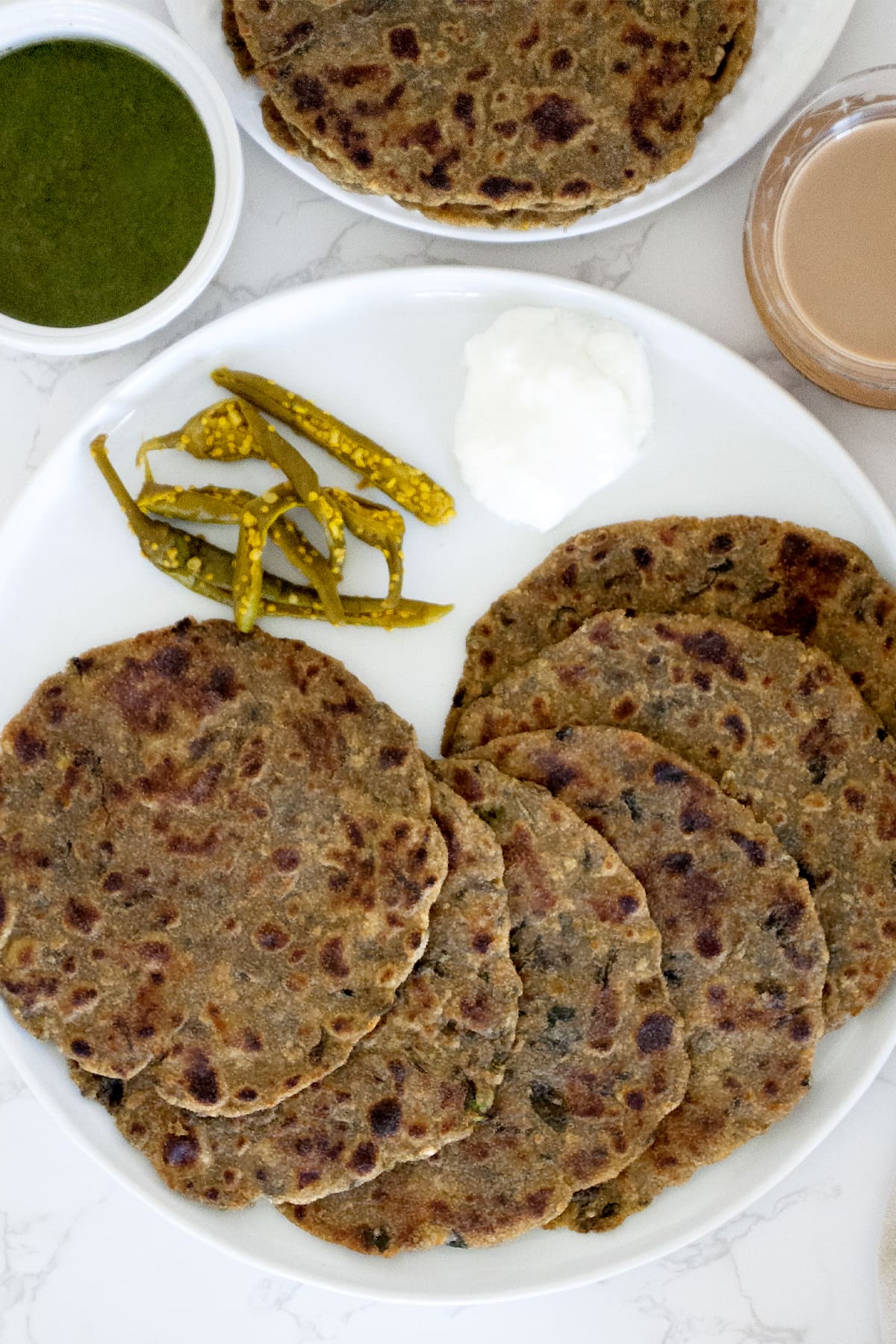
I love Gujarati food, and I grew up enjoying it a lot with Gujarati friends in school and college. Gujarati Dal, Dal Dhokli, Khandvi, and Khaman Dhokla are some of my favorites.
In Gujarati families, Dhebras are a daily staple eaten at any time of the day. They get their distinctive bitter flavor from freshly harvested fenugreek leaves. Combined with a few ground spices, they transform from regular roti into masala-rich heaven.
If you enjoy Indian flatbreads, you will love this healthy Methi na Dhebra recipe.
Table of Contents
Watch How to Make Methi Dhebra
What is Dhebra?
A soft Indian flatbread called Dhebra is a staple of Gujarati cuisine. A combination of whole wheat, bajra, or other flour is used to make the basic dough. Leafy greens like methi or spinach are combined with sesame seeds, carom seeds, turmeric, and other seasonings.
Dhebra goes well with chhundo (sweet mango pickle), red garlic chutney, and dahi (yogurt).
Dhebra vs. Thepla
Methi is one of the primary components in both of these Gujarati dishes. However, some of the additional ingredients and the cooking techniques are different.
Whole wheat flour (atta) and flavors like jeera, methi (fenugreek leaves), and others are used to make thepla. It is soft but firm, like methi paratha, and is rolled thin using a rolling pin.
On the other hand, dhebra is created from a combination of whole wheat and other flours (bajra, jowar, etc.). The dough becomes crumbly when millet and wheat flour are added. As a result, it is more crumbly and tougher than theplas.
Why you’ll love this recipe
- They are delicious as a snack or fun side dish
- Super healthy meal
- Great for meal planning
- Freezes well
Ingredients you’ll need to make Methi Dhebra
Methi: One of the key components in the preparation of Dhebra is Methi, fresh fenugreek leaves.
Whole Wheat Flour & bajra flour (Pearl Millet): are used to make Methi Dhebra.
Sesame seeds & Sugar: significantly enhance the flavor.
Carom seeds: are delicious additions!
Spices: Add turmeric, salt, ginger, green chili, and asafoetida.
Yogurt: Use thick and fresh plain yogurt; it combines the dough and gives a soft texture.
Oil or Ghee: It is added to make the dhebra soft.
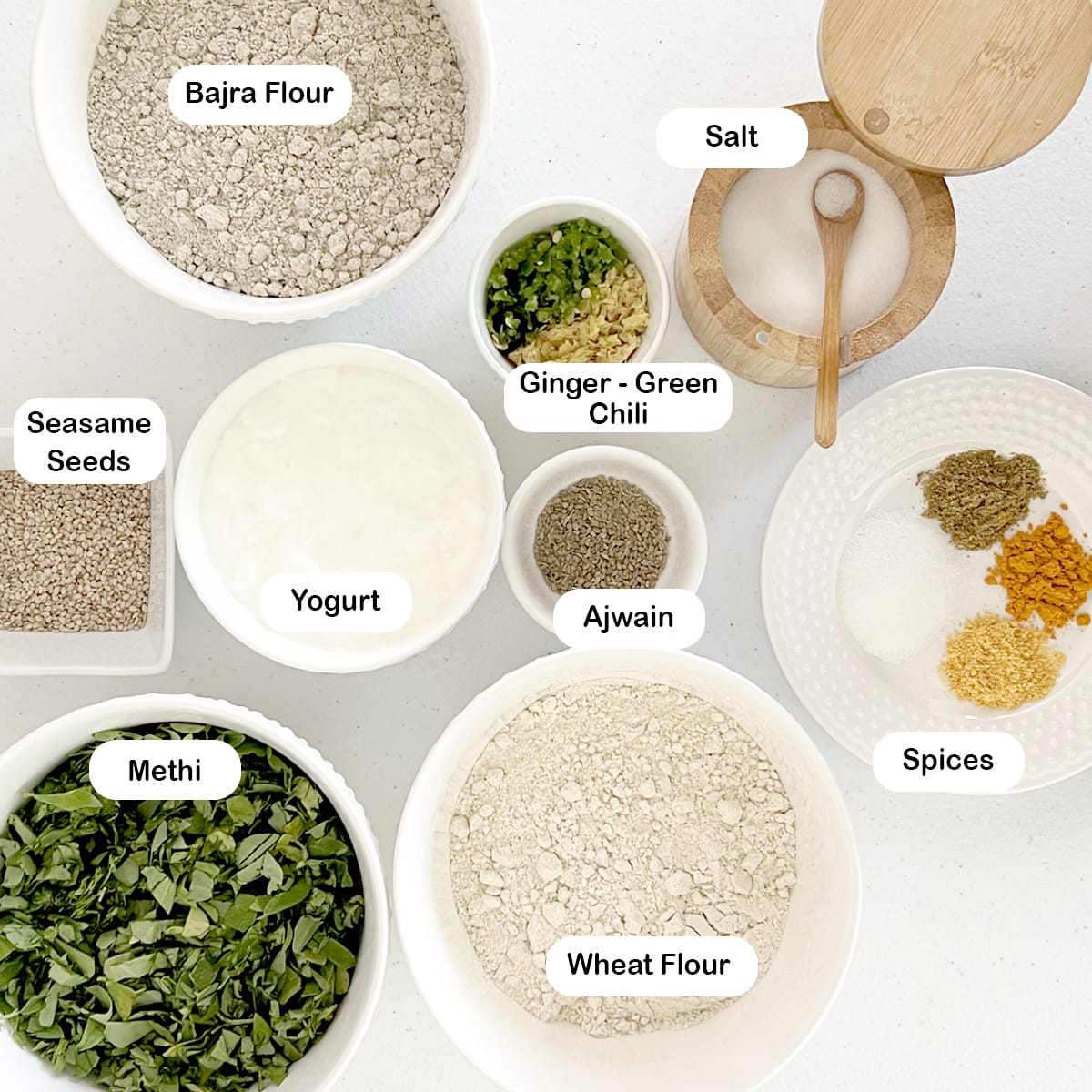
How to make Methi Dhebra?
First, prepare the fenugreek: Pluck the Methi leaves and wash them in cool running water. After that, completely drain them and dry them with a paper towel or kitchen towel. Finely chop the leaves, then place them aside.
TIP: The methi leaves must be finely chopped. If the leaves are not finely chopped, it will be difficult to roll the dough, and it can rip.
Let’s combine fenugreek leaves, ginger paste, green chilies, sesame seeds, turmeric powder, sugar, and asafoetida in a large mixing dish. Mix thoroughly.
Mix in the bajra flour, whole wheat flour, and salt.
Using your finger, thoroughly combine the fenugreek mixture with the flour. The texture will be crumbly.
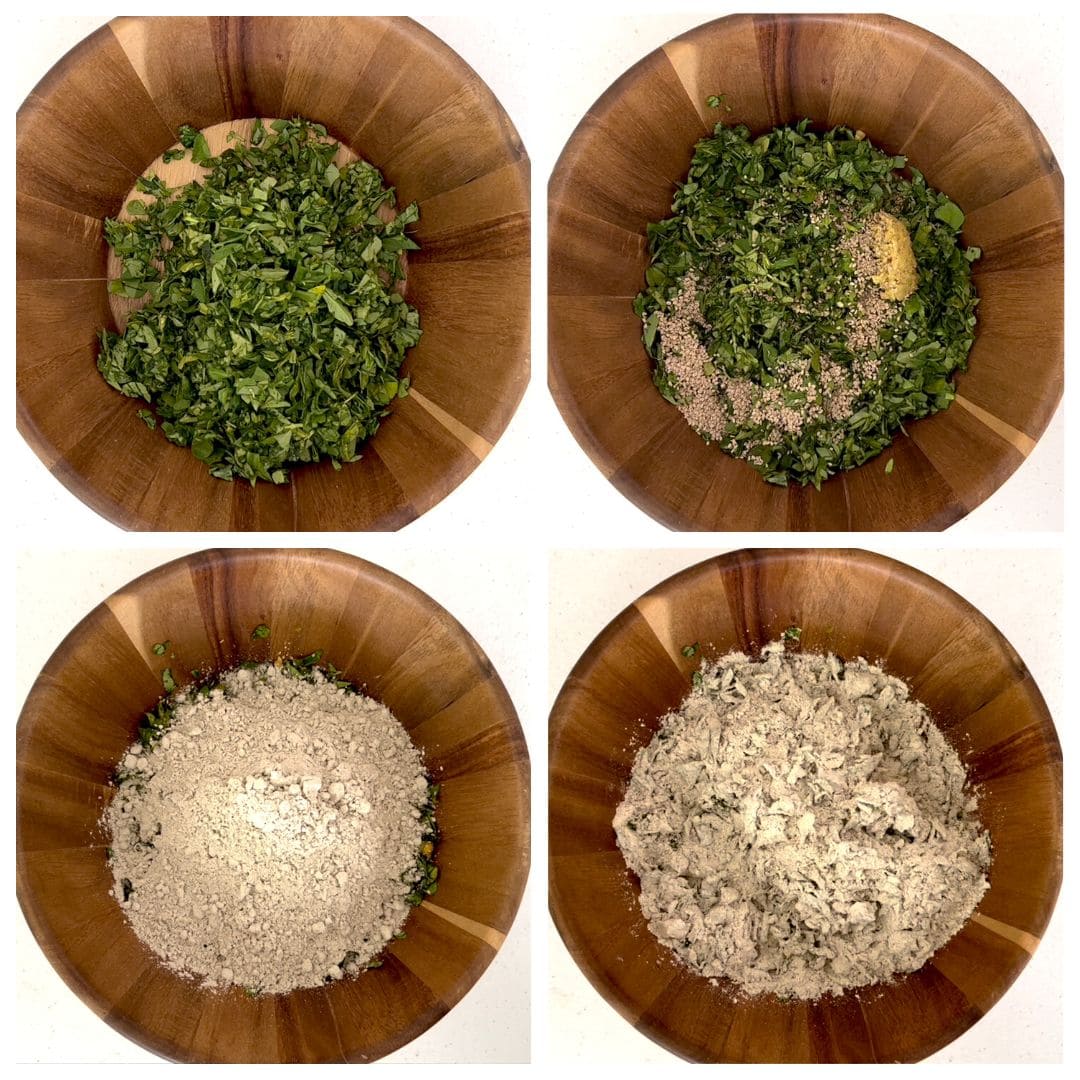
Knead in 1 tablespoon of yogurt at a time to make a soft dough. Allow it to stand for 10-15 minutes, covered.
Knead it again after 15 minutes to smooth it out.
Make it into equal halves. Roll each piece between your palms and press to form a circle.
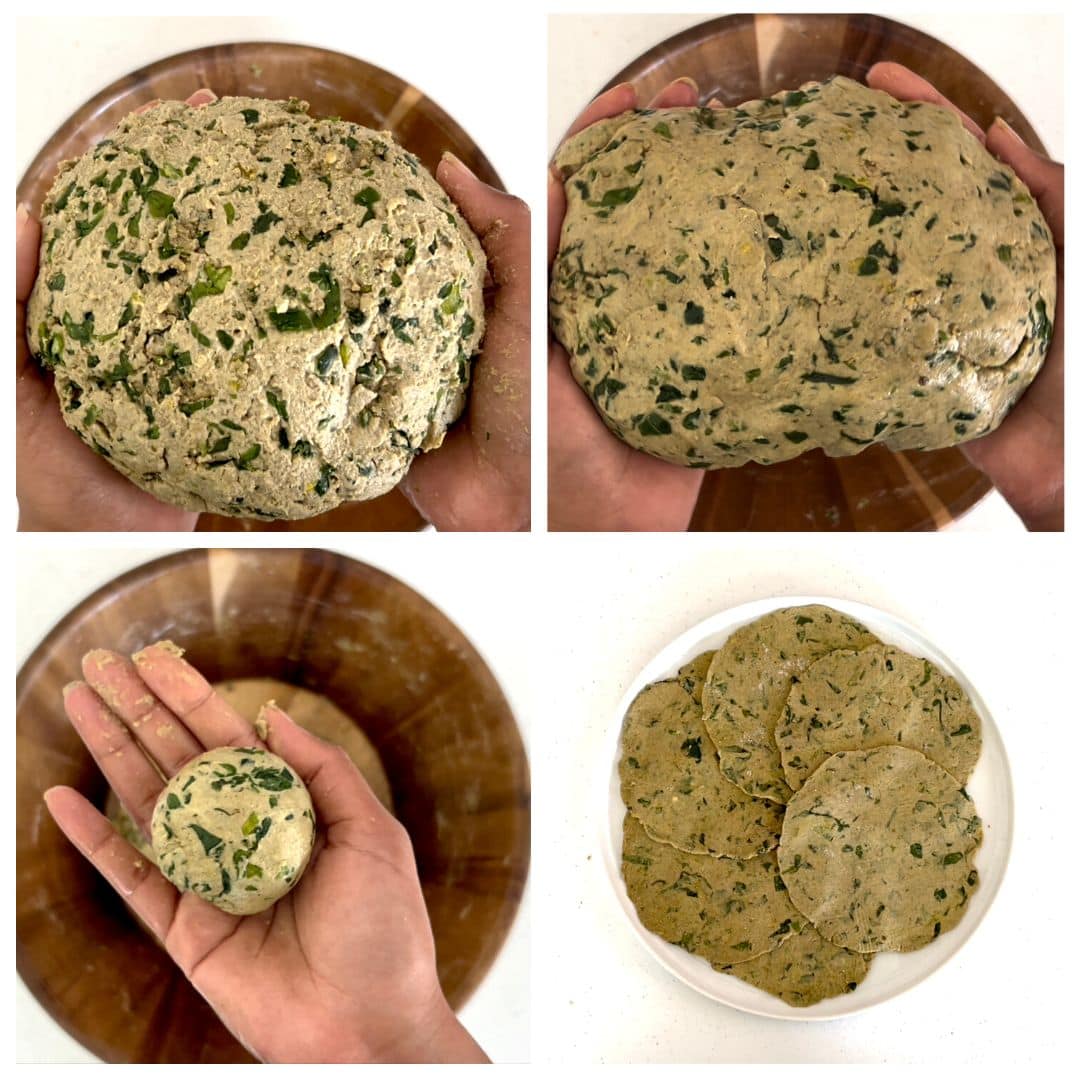
Warm the Tawa over medium heat.
Coat the flattened ball well in dry chapati flour. Roll it carefully.
When the pan is heated, lay the rolled dhebra on it. Flip it when you notice bubbles on it. After a few seconds, drizzle oil on it and flip it again, pressing gently with a spatula until you see some brown spots on the bottom.
Apply more oil to the other side, flip, and cook on that side.
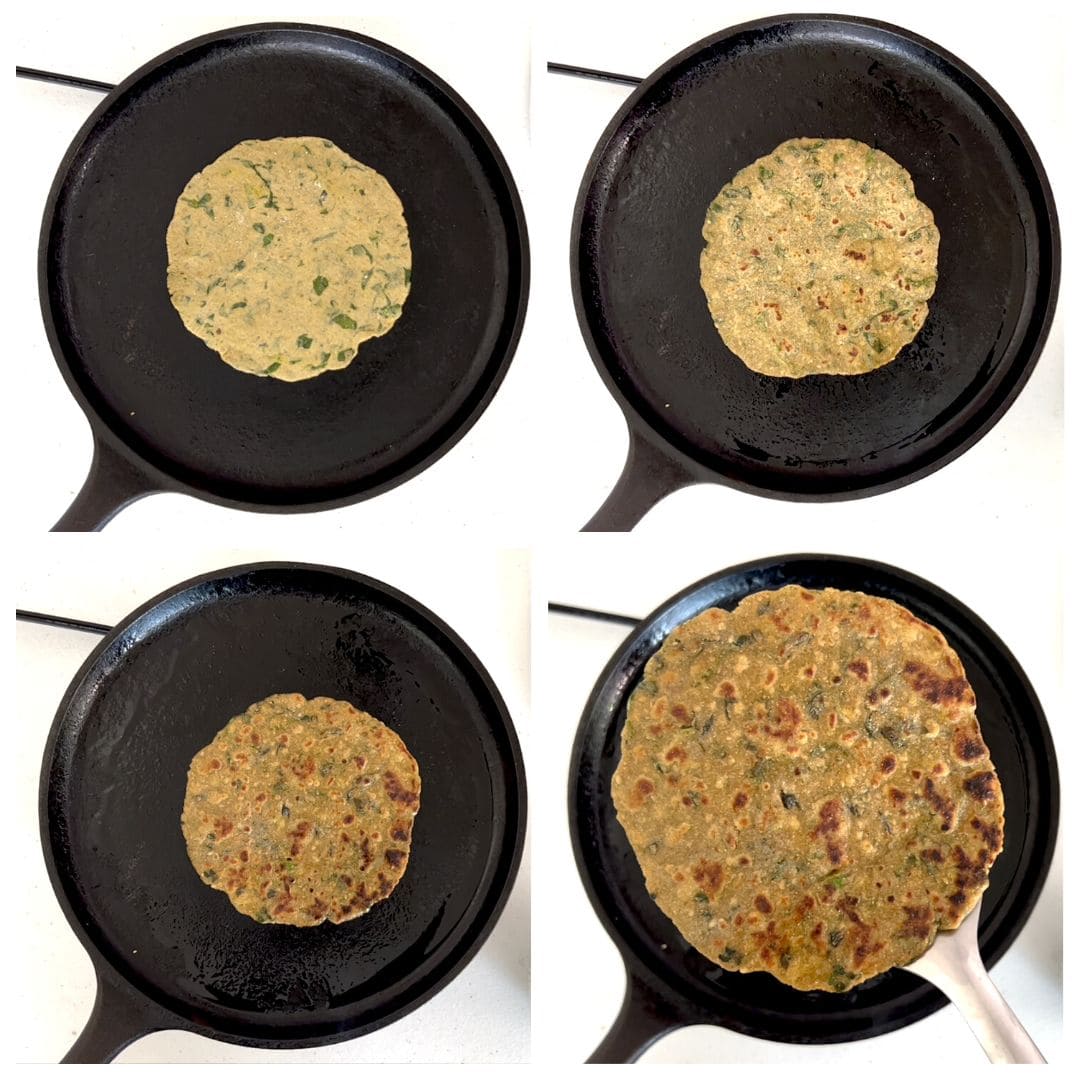
Serving Suggestions
Pickled peppers (athela marcha), mango pickle, mango chutney, or mango chunda, red garlic chutney, dahi (yogurt), & green chutney are good accompaniments to methi dhebra. Mango’s sweetness and fenugreek’s bitterness go along beautifully!
As a side food, methi Dhebra goes well with masala chai.
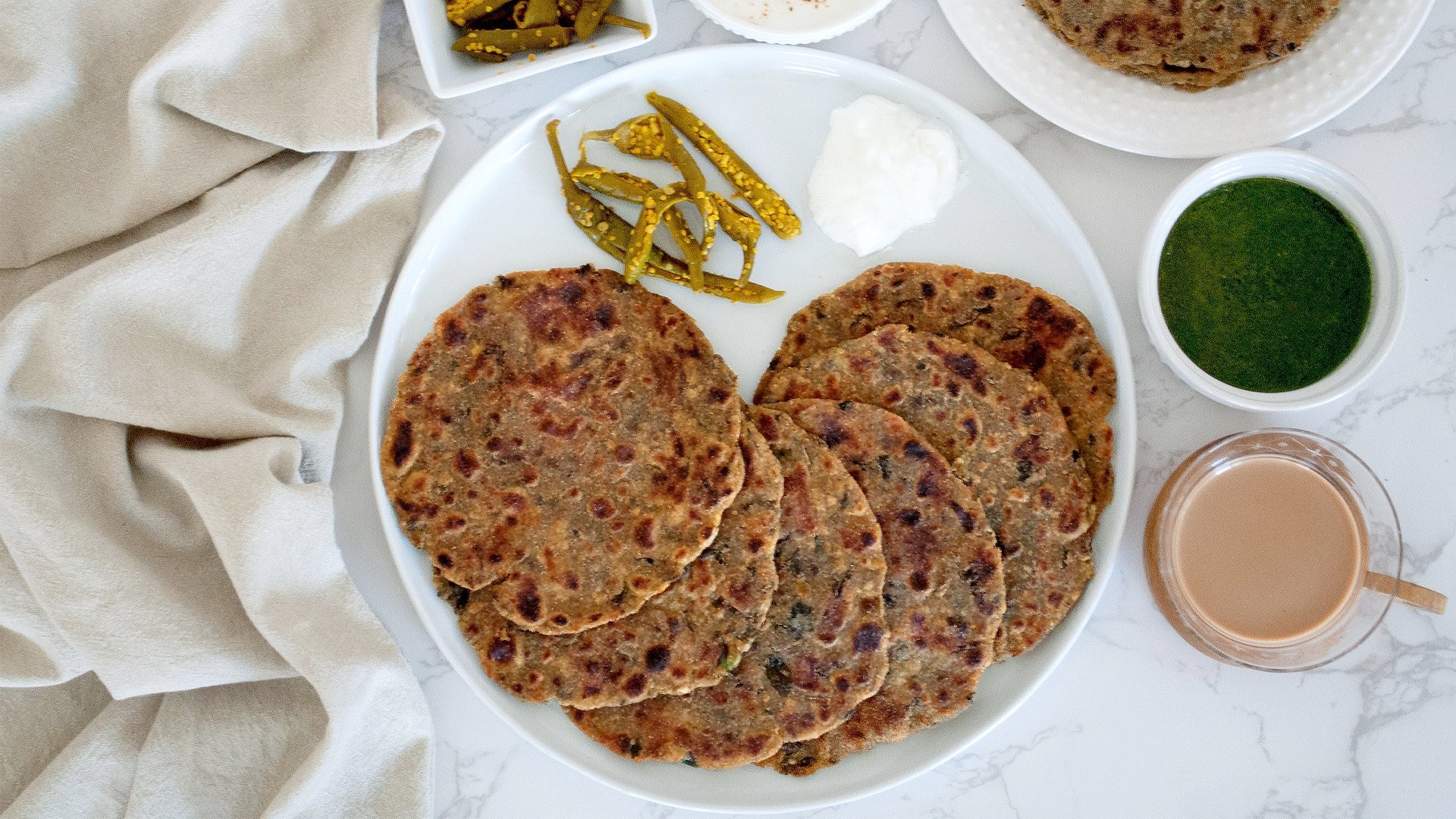
Storage Suggestions
Methi Dhebra can be stored in the refrigerator for two to three days in an airtight jar. Then, microwave the food for 10 seconds before eating.
These Dhebra are excellent for school lunches and traveling since they keep fresh for one to two days at room temperature.
Tips to make Perfect Methi Dhebra
Yogurt: Do not skip adding curd; else, the methi’s bitterness would be overpowering.
Cooking: Dhebra should not be cooked at a low temperature; it requires a medium to a high flame because Thepla would get brittle and hard on a low flame.
Dough: If you are making it for the first time, remember that the dough is sticky and that you must be gentle when rolling it. In contrast to roti or paratha, it won’t be perfectly round due to the millet flour (bajra flour). Dhebra rolling requires practice.
Rolling: Because bajra flour lacks gluten, rolling will be challenging. However, wheat flour is helpful for binding. Reduce the whole wheat flour you sprinkle on the dough since it tends to dry it out while it cooks.
Common Questions
Of course! If fresh methi isn’t available in the summer, you may easily substitute dried fenugreek leaves. However, when dried ones are utilized, the flavor varies somewhat.
The methi leaves should first be removed from the stem and set aside. Next, give the methi leaves a double- or triple-rinse in clean water. Once finished, finely chop them and add them to the dough.
More indian flatbread recipes:
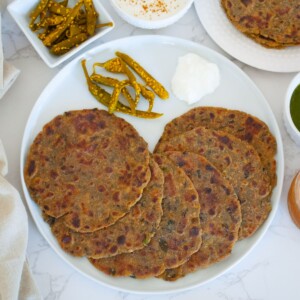
Methi Dhebra
Video
Ingredients
- 2 cup Bajra Flour/Pearl millet flour
- 1/2 cup Whole Wheat Flour
- 2 cup Fenugreek leaves, finely chopped
- 1 cup Plain Yogurt
- 1/2 teaspoon Salt
- 1 tablespoon Ginger, green chili paste
- 1/2 teaspoon Turmeric powder (Haldi)
- 1 teaspoon Carom seeds (Ajwain)
- 3/4 tablespoon Sesame seeds
- 1 tablespoon Sugar
- Vegetable Oil , for roasting
Instructions
- First, prepare the fenugreek: Pluck the Methi leaves from the stem and wash them in cool running water. After that, completely drain them and dry them with a paper towel or kitchen towel. Finely chop the leaves, then place them aside.
- Let's combine fenugreek leaves, ginger paste, green chilies, sesame seeds, turmeric powder, sugar, and asafoetida in a large mixing dish. Mix thoroughly.
- Mix in the bajra flour, whole wheat flour, and salt.
- Using your finger, thoroughly combine the fenugreek mixture with the flours. The texture will be crumbly.
- Knead in 1 tablespoon of yogurt at a time to make a soft dough. Allow it to stand for 10-15 minutes, covered.
- Knead it again after 15 minutes to smooth it out.
- Make it into equal halves. Roll each piece between your palms and press to form a circle.
- Warm the Tawa over medium heat.
- Coat the flattened ball well in dry chapati flour. Roll it carefully.
- When the pan is heated, lay the rolled dhebra on it. Flip it when you notice bubbles on it. After a few seconds, drizzle oil on it and flip it again, pressing gently with a spatula until you see some brown spots on the bottom.
- Apply more oil to the other side, flip, and cook on that side.
- When done, remove from skillet/tawa and repeat until all of the dough is used up.
Notes
- Do not skip adding curd; else, the methi’s bitterness would be overpowering.
- Dhebra should not be cooked at a low temperature; it requires a medium to a high flame because Thepla would get brittle and hard on a low flame.
- If you are making it for the first time, remember that the dough is sticky and that you must be gentle when rolling it. In contrast to roti or paratha, it won’t be perfectly round due to the millet flour (bajra flour). Dhebra rolling requires practice.
- Because bajra flour lacks gluten, rolling will be challenging. However, wheat flour is helpful for binding.
- Reduce the whole wheat flour you sprinkle on the dough since it tends to dry it out while it cooks.
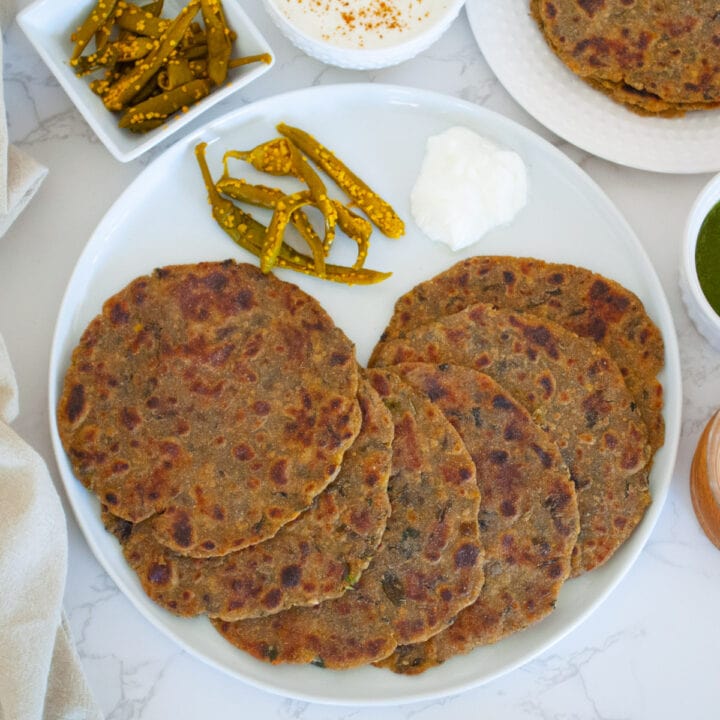
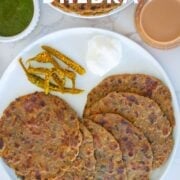
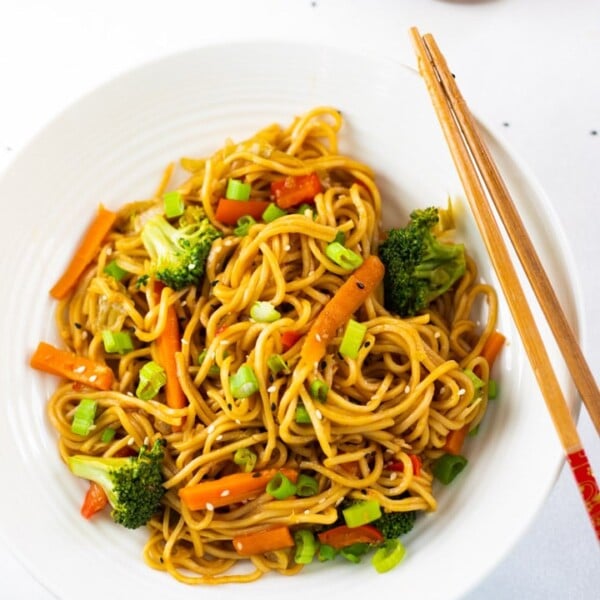
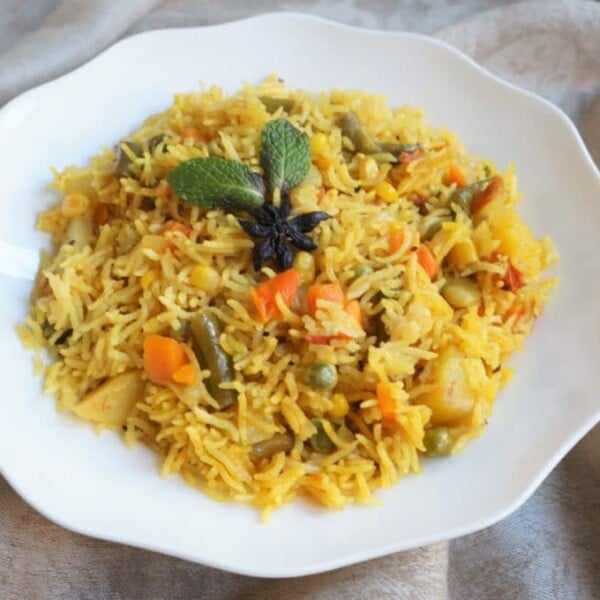
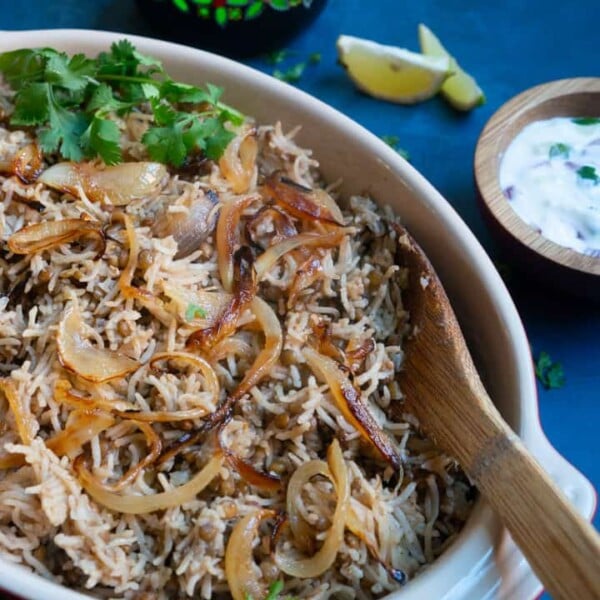
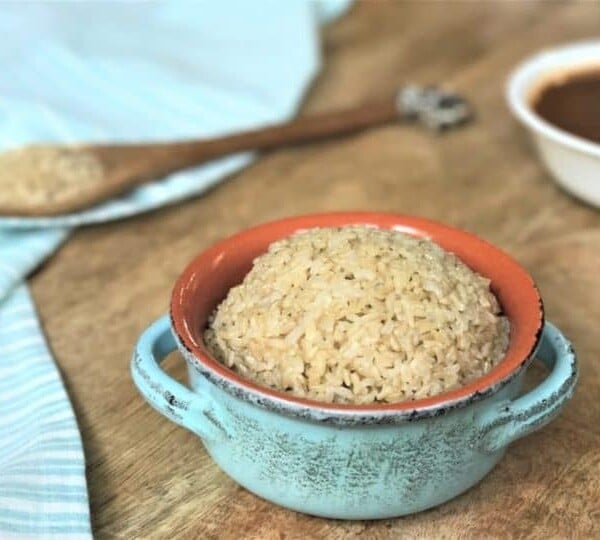








I am unable to get fresh methi leaves where I live!
What is my alternative?
Can I use dried (Kasturi) methi leaves?
Sometimes I see frozen methi leaves in the store, but have not tried to use them.
Hi Ila – You can use kasuri methi, however I would suggest to use 1/3 amount as in the recipe, as the dried leaves are much more potent compared to fresh ones.
Hi, this recipe looks so good and your instructions are very clear. Thanks for the recipe.
Wow this looks great! Could we use jowar flour instead of bajra flour?
Thanks Maneesha. I have not tried, but you can make this with Bajra Flour too. Hope you enjoy it.